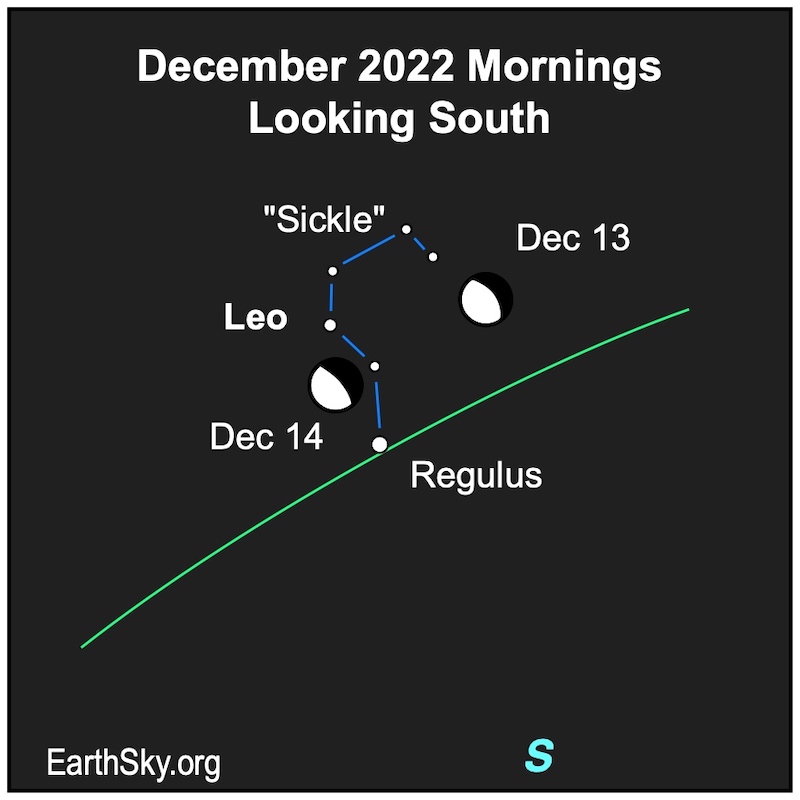Moon and Lion
For those up late on December 12 and 13, 2022 – or up in the quiet, early morning dark hours of December 13 and 14 – look for the waning gibbous moon in the constellation Leo the Lion. As a matter of fact, Leo is one of the easiest constellations for stargazers to pick out from the sea of stars. That’s because it has a distinctive backward-question-mark shape. This pattern is a well-known asterism, called the Sickle. And this hooked shape also denotes the head and mane of the Lion. The bright star Regulus is the period at the bottom of the question mark. And on these two mornings, no matter where you are on Earth, you can watch the moon pass through the Sickle and close to Regulus.
To see a precise view from your location, try Stellarium Online.
Regulus and the ecliptic
Regulus is the only 1st-magnitude star that sits almost right on the ecliptic. The ecliptic is the path the sun follows through the sky, where you can also find the moon and planets.
As you can see from the chart above, on these nights the moon is farther from the ecliptic than Regulus. That’s because the moon can stray as far as 5.1 degrees from the ecliptic. If the moon were always on the ecliptic, it would occult, or pass in front of, Regulus every month. The last lunar occultation of Regulus was 2017, and the next won’t be until 2025. Then, Regulus will undergo a series of 20 lunar occultations over the course of a year and a half.
The waning moon
Full moon was the night of December 7-8, 2022. And the moon is now waning. It’s in a waning gibbous phase during the time around December 12 to 14, rising late at night, appearing more than half lighted but less than full. Last quarter moon, when the moon will rise around midnight, will come at 8:56 UTC on December 16, 2022.
After that, we’ll see the moon only in the morning sky. It’ll be in a waning crescent phase. New moon – when the moon is most between the Earth and sun for this month – will come 10:17 UTC on December 23.
Bottom line: You can see the moon in Leo the Lion near the Sickle early on December 13 and 14. Leo is noticeable due to its backward-question-mark shape that makes up the Sickle.
For more great observing events in the coming weeks, visit EarthSky’s night sky guide



